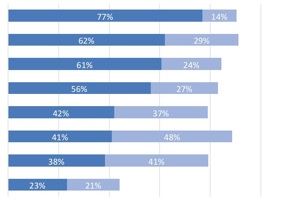By Scott Evans, ARC Advisory Group
ARC Advisory Group conducted a web-based survey in conjunction with SPAR 3D in Q3 2015 to examine current and future expectations among users of industrial 3D Scanning technology. The user respondents represented a wide range of industries, applications, and experiences. One question asked them to rate the importance of select technical criteria in making a purchasing decision (business criteria in separate question for another post). The chart below depicts the results:
The paramount importance of scan accuracy, resolution, and/or noise reduction is most striking, with 91% of respondents ranking this criterion as either a high or medium level of importance. However, the inconsistent ability to achieve the required level of accuracy remains the most pressing technical challenge for users.
Another question revealed that only 7% of respondents strongly believe that other technologies are superior to 3D Scanning. While 3D Scanning may offer technical preeminence, issues related to ease-of-use are preventing 3D Scanning users from realizing the full potential of the technology. Users encounter more difficulties with 3D Scanning software than with 3D Scanning hardware.
Recommendation:
Suppliers have made excellent strides in improving ease-of-use, but there is still much more work to be done to broaden user adoption. Around half of all users have under 5 years of experience with 3D Scanning, which contributes to the need for improved ease-of-use. No matter the reason, errors (including those by the user) lead to long-lasting distrust of the technology. In fact, over 90% of respondents believe that future success of 3D Scanning is contingent on improving ease-of-use and processing of large point clouds.
ARC looks forward to sharing other findings from the survey in future blog posts.






